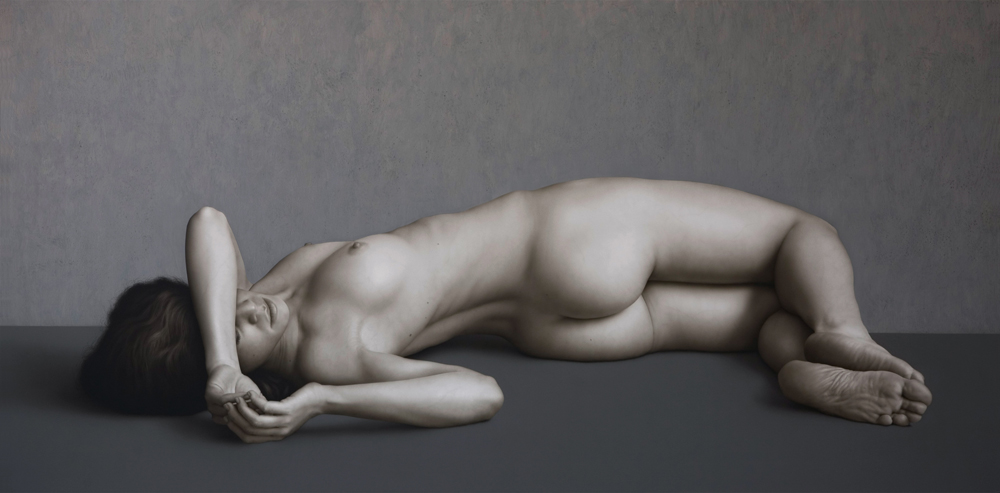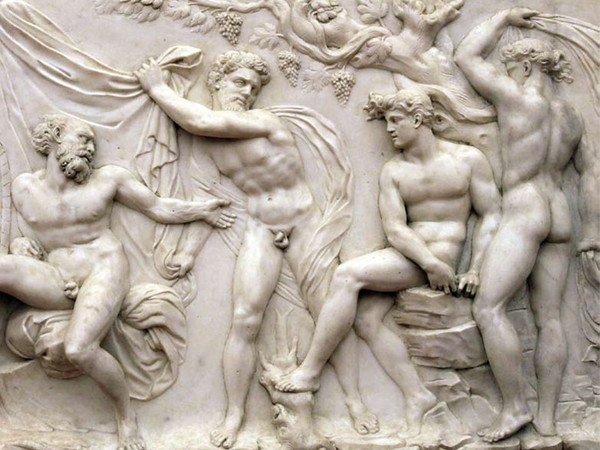Bernardo Torrens: Paintings of Melania & Jesi
Bernarducci Meisel Gallery
July, 2012
For those who follow Madrid-based hyper realist artist Bernardo Torrens, there is a familiarity with his stable of regular models. In this show at Bernaducci Meisel Gallery, we are offered a new group of masterfully executed paintings focusing primarily on two new subjects: strong featured model Jesi, and the Spanish dancer Melinia Olicina.
With his strong foundation in drawing and thorough understanding of human anatomy, Torrens acute focus is on every aspect of the body, and he lavishes as much attention on a toenail or a wrinkle as he does on providing an awareness of the subjects eyes. The works certainly go beyond the realm of photorealism in this respect. Torrens captures a particular personality with engaging eye contact, which goes beyond technique and reaches into a deeper space that the artist has to explore. I am sure much of Bernardo’s skill and patience comes from his foundation in medical science. Having studied to become an MD in his youth, he took a descidely different path by applying his understanding of the underlying structure of human anatomy. I believe this change of direction will have an impact on artistic culture for many generations by offering a glimpse of the heights that virtuosity can achieve.
Torrens oeuvre in the past has included all body types and he has always faithfully documented every blemish, mole or stray hair in his quest for perfection. With his current focus on professional dancer Melania Olicina in her prime, the concentration this time is on the model’s trained and toned musculature. These are amazingly analytical works in their physicality, with every tendon, bone and muscle defined. Working with warm grey tones against cooler grey backgrounds in some pieces, the figures tend to push out toward the viewer, and out of the confines of the painted panels. It is a wonderful effect to see these works. These exude a luminosity which adds to their believability. The piece ‘Summer Siesta’ feels like you can literally touch the sleeping woman’s hand. A rich mixture and deft handling of the interplay between warms and cools makes this for me one of his most masterful images. In most trompe-l’oeil paintings the illusion of reality is best achieved when the depth of space is not that great, there are of course exceptions.
There is the old Greek story of the rival artists Zeuxis and Parrhasius holding a contest to see who could produce the most convincingly real image, with Zeuxis creating a still life so well crafted that birds came down from the sky to peck at the painted grapes. Feeling confident, he then asked Parrhasius to pull aside the curtain covering his painting so it could be judged, big mistake as Zeuxis soon realized the curtain was in fact the painting. Of course our understanding of spatial reality pitted against illusion has changed tremendously in our evolution, taking the Lumiere brothers’ famous 1890’s film experiment of a train coming towards the audience into consideration, it caused a mad rush for the door which certainly seems ludicrous by today’s understanding of illusion.
That being said, our understanding of trompe-l’oeil has matured from wanting to remove the painted curtain to an appreciation of the technical skill involved in getting an illusion to the right pitch – where we enjoy the attempt to fool the eye. This is the plateau to which Torrens brings us with each work as perfectly realized as the next. He has transcribed these images from photographs, but added a feeling of awareness and soul into these illusions. To wait before a painting and expect the figure to take it’s next breath is the greatest accomplishment of all.









